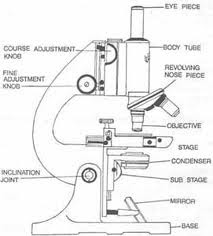| This is a picture of a reading stone. |
 |
| the eyeglass |
 |
| telescope |
The third inention was called a telescope. The telescope was invented by Zaccharias Jenssen and his son Hans. This was created in 1590. It helped make objects far away seem closer.
The next tool invented was the microscope in 1665 by a man named Robert Hooke. He realized when he looked through it he could see holes in a peice of cork.
The next tool invented was the microscope in 1665 by a man named Robert Hooke. He realized when he looked through it he could see holes in a peice of cork.
 |
| microscope |
In 1674 the new tool to study cell biology simple microscope.
A man named Anton Van Leeuwhen Hoek made a simple microscop
e so he would be able to look at blood, insects, yeast and other small objects. He was also the first to be able to describe bacteria.
 |
| simple microscope |
In 1872 the formula that would determine what the maximum resolution possible for a microscope was invented. This was invented by Ernst Abbe.
In 1932 the phase control microscope was invented by Frits Zernike. This allowed him to study colorless substances.
 |
| phase contrast microscope |
 |
| scanning tunneling microscope |
The scanning tunneling microscope was invented in 1981 by Gerd Binnig and Heinrich. this gave three deminsional objects to fit atomic level.



No comments:
Post a Comment